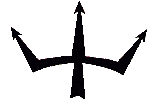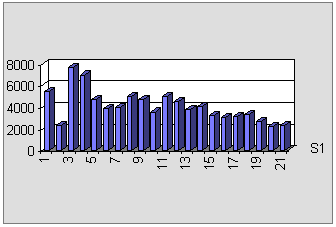|
|
History of Paxos
As all the Eptanisa (7 Ionian islands)
Paxos has the trident as its emblem. It is said that the god Poseidon,
ruler of the seas, wishing to create a beautiful, peaceful island far
away from the other gods and men, and intending to live there with his
beloved Amfitriti, struck the southern part of Corfu hard and Paxos was
formed. With the blow, however, he lost his trident which the Paxiots
later found and made their emblem.

The island has pursued a course
through history which parallels that of Corfu. At the side of the larger
island it fought against both pirate raids and Turkish attacks. Real
progress, however, ïnly began with the occupation by the Venetians in
1386.
The castle of St. Nicholas was built in 1453 and although ruined today
it still stands guard proudly over the island, aweing the visitor with
its presence and impressing with its simplicity and imposing lines, its
cannon and the ports through which they were fired. Á second castle was
built at about the same time: that of Dialetos, at Babaka near Lakka,
close to the famous Harami beach, but neglect has ensured that no traces
of it can be seen today.
Once the security of the island had
been established, the attention of the inhabitants turned to increasing
the island's production of olives. The extent of their achievement, the
results of their sweat and toil in these distant years, can be admired
today. The whole island is an endless olive grove, and the minute
amounts of soil are retained by retaining walls - thousands of metres of
wall. There are some two hundred and fifty thousand olive trees on the
island, and the 152 ruined and primitive olive-presses remind the
visitor of the hive of work and activity that this island once was.
In 1797, after 411 years of Venetian
occupation, Paxi was handed over to the French revolutionary government.
French occupation initially lasted only 2 years, and a successful joint
Russian -Turkish siege in 1799 led to the proclamation of a
"Septinsular Republic" and a Constitution (1800). The
fledgling republic was under the protectorate of Turkey and Russia. But
this Greek state was to exist for only seven years. In accordance with
the secret articles of the Treaty of Tilsit (July 8, 1807), the Ionian
Islands were returned to French control, which lasted until 1814. During
the Napoleonic Wars, which covered this period, the island was under
English blockade, and serious shortages of food developed. This caused
the Paxiots to rebel, in 1810, and kill the island's Commander, Count
Dimakis Makris, and Laskaris Grammatikos and to injure a number of
others. The French, however, managed to put down the rising in a few
days. and the ring-leaders were severely punished. Seven of them were
shot, in 1811, in Corfu Castle, many were imprisonsed and still more
islanders were forced to emigrate. Én 1814, however, an English fleet
under Captain (later Sir Richard) church, with the aid of the Greek
freedom fighter Theodoros Kolokotronis, captured the castle and overcame
the guard without a shot being fired.
Éç 1817, a new Constitution was signed, and the "United State of
the Ionian Islands" came into being under British protectorate. The
British Lord High Commissioner held supreme authority in the islands
until 1854. when Paxi and the the rest of the group were formally
amalgamated with Greece.
229 ð.×.-733 ì.×.
733-1204
1214-1267
1267-1386
1386-1797
1797-1799
1799-1807
1087-1814
1814-1864
|
Roman State
Byzantine Empire
Despotic rule by Epirus
Andegavi (French probably Normans)
Venetians
French Democracy
Russoturks
French Empire
English |
Population in Paxos 1740-1981
| Year
1740 1766 1781 1800
1808 1809 1820 1845 1857 1870
1879 1885 1896 1907 1920 1928
1940 1951 1961 1971 1981
|
People
5500
2307
7729
7000
4700
3905
3970
5017
4752
3582
5002
4592
3814
4120
3282
3037
3203
3318
2678
2253
2370
|

|
|